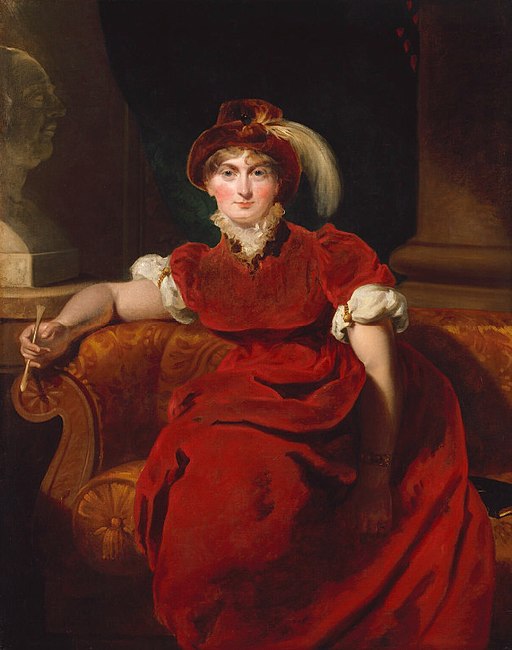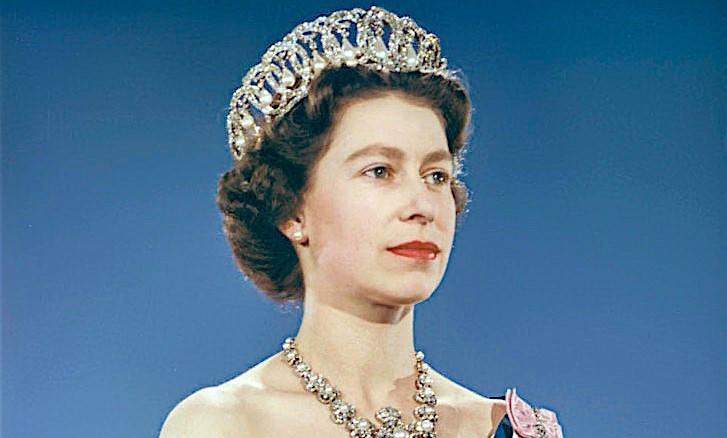Find out more about The Open University’s History courses.
 The Royal Coronation of H.M. King George IVWestminster abbey during the coronation of George IV, George IV is seated on a raised platform with spectators surrounding him.
The Royal Coronation of H.M. King George IVWestminster abbey during the coronation of George IV, George IV is seated on a raised platform with spectators surrounding him.
Although coronation ceremonies are characterised by tradition, they are also important opportunities for new sovereigns to communicate their own intentions for shaping the institution of monarchy. For Charles III, ascending the throne after the 70-year reign of his mother, Elizabeth II, the coronation acts as a particularly significant declaration of a new chapter in the history of the British monarchy.
While it seems that Charles III’s coronation will lean towards the minimalist, the 1821 coronation of George IV (r.1820-1830) was a piece of maximalist, extravagant theatre.
 Coronation Portrait of George IV (1821)King George IV depicted wearing coronation robes and four collars of chivalric orders: the Golden Fleece, Royal Guelphic, Bath and Garter.
Coronation Portrait of George IV (1821)King George IV depicted wearing coronation robes and four collars of chivalric orders: the Golden Fleece, Royal Guelphic, Bath and Garter.
A specially commissioned diamond diadem, a 27-foot long velvet robe, and a bill for over £230,000 [equivalent to around £28,000,000 in 2023], George IV’s coronation was the last word in luxury. While George IV’s parents, George III and Queen Charlotte, had been known for their simple way of living, the same could not be said of their eldest son.
George IV’s years as Prince of Wales and Prince Regent were blighted by financial issues, as the prince spent his generous allowance on artwork, architecture, and a vibrant social life. Given his penchant for the finer things, it is perhaps unsurprising that George IV’s coronation cost 20 times that of his father’s. It remains, in 2023, the most expensive coronation in British history1.
George IV’s coronation is also memorable for another reason, the unexpected arrival of his estranged and uninvited wife, Caroline of Brunswick. The pair had married in 1795 but separated a year later, after the birth of their only child, Princess Charlotte. If George IV hoped that the splendour of the coronation would eclipse the scandals of his personal life and start afresh his time as sovereign, he was to be disappointed. On hearing of her husband’s ascension to the throne, Caroline returned from Europe, fully intent on taking her place as Queen Consort. The king had spent fruitless months attempting to secure a legal divorce from Caroline, using her rumoured affairs in Europe as justification.
This approach only earned him the contempt of the public, who were aware of George’s own infidelities with several women. As the coronation drew closer, public opinion remained firmly on Caroline’s side. Unable to secure a legal divorce, the king had made sure that his wife would not set foot in Westminster Abbey, let alone be crowned Queen, and her name was removed from the coronation ceremony. Despite not receiving an invitation, Caroline insisted on travelling to the coronation. Crowds of people watched as she was denied entry to the Abbey and turned away by guards. Her determination to enter the Abbey by any means became so comical that onlookers, previously sympathetic to her cause, began to jeer at her, and she left in haste (Fraser, 2009, pp. 6-8).
 Portrait of Caroline of Brunswick (1768-1821)An oil portrait painting of Caroline of Brunswick from the National Portrait GalleryIn the end, George IV had his way and his wife was
never formally crowned Queen, but her appearance at the coronation cast a sense
of the ridiculous over the ostentatious event. Commentators were quick to
emphasise the contrast between their new monarch and the ‘adored’ late George
III, whose thrift and morality had made him a symbol of British values during
the drawn-out conflict with Napoleon. The more turbulent aspects of George
III’s 60-year reign– the war with the American colonies and conflicts with
Parliament– were conveniently forgotten. Following in the footsteps of
Britain’s (then) longest-reigning monarch was never going to be an easy task
and George IV’s reputation was tarnished by well-publicised financial and romantic
scandals before he ascended the throne.
Portrait of Caroline of Brunswick (1768-1821)An oil portrait painting of Caroline of Brunswick from the National Portrait GalleryIn the end, George IV had his way and his wife was
never formally crowned Queen, but her appearance at the coronation cast a sense
of the ridiculous over the ostentatious event. Commentators were quick to
emphasise the contrast between their new monarch and the ‘adored’ late George
III, whose thrift and morality had made him a symbol of British values during
the drawn-out conflict with Napoleon. The more turbulent aspects of George
III’s 60-year reign– the war with the American colonies and conflicts with
Parliament– were conveniently forgotten. Following in the footsteps of
Britain’s (then) longest-reigning monarch was never going to be an easy task
and George IV’s reputation was tarnished by well-publicised financial and romantic
scandals before he ascended the throne.
Although the coronation of Charles III looks set to be very different to that of George IV, the two kings do share some things in common. Both faced the challenge of succeeding a respected, popular, and long-reigning sovereign, in addition to the challenge of how to transition from heir presumptive to sovereign in the eyes of the public. As with George IV, Charles III spent many decades as heir presumptive, a position which placed both individuals at the centre of public fascination with the monarchy. The constant press attention on the two princes led to the exposition of details of their private lives, blurring the traditional boundaries between the monarchy and the people.
Given these challenges, the coronations of both kings hold special significance in establishing and asserting their new positions as sovereigns. For George IV, the coronation was an opportunity to declare his vision of an extravagant and glamorous monarchy, focused entirely on himself. For Charles III, the ceremony on 6th May is a chance to adapt the coronation, and the monarchy itself, for the twenty-first century.



Rate and Review
Rate this article
Review this article
Log into OpenLearn to leave reviews and join in the conversation.
Article reviews